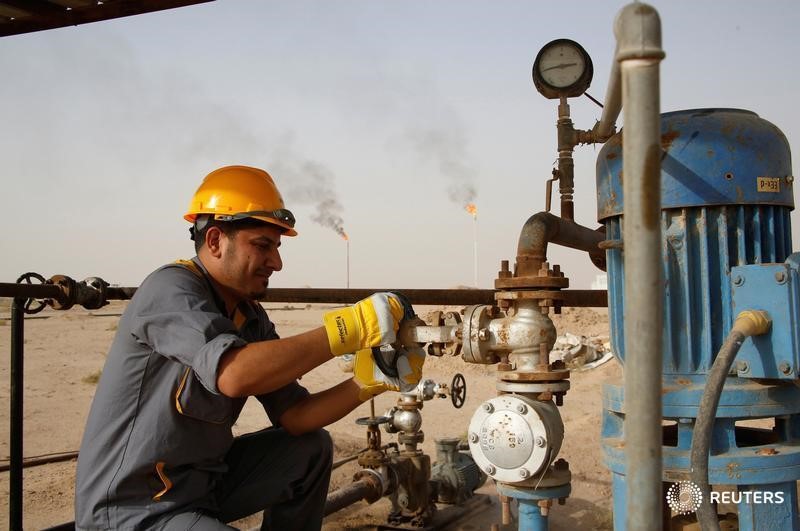Investing.com — Oil prices rose Thursday, recovering from near four-month lows although concerns over a slowdown in global crude demand remain.
By 03:20 ET (xx.xx GMT), the futures traded 1.1% higher at $76.15 a barrel, while the contract climbed 1.1% to $80.35 a barrel.
Both contracts fell in the previous session to their lowest levels since late July, with Brent briefly trading below the key $80 a barrel level.
Global crude demand slows
Despite today’s gains, the market is on course for hefty losses this week following data from the , an industry body, showing U.S. crude inventories registering their biggest weekly build since February, almost 12 million barrels in the week to Nov. 3.
The API data signaled some cooling in U.S. fuel consumption, especially as the winter season approaches. The official numbers from the are now due next week, after being delayed.
Additionally, China, the world’s biggest oil importer, fell back into disinflationary territory in October, according to released earlier Thursday, indicating that the country’s recovery is wavering despite repeated efforts from Beijing to improve economic growth.
The inflation readings came just a few days after disappointing from the country. While China’s oil imports still remained steady, analysts warned of a potential slowdown in crude demand, especially with high stockpiles and potentially lower export quotas for refiners.
In Europe, data released this week showed weak and a downturn in eurozone business activity last month, suggesting there is a growing chance of a recession in this important energy consuming region.
OPEC’s growth assurances disregarded
These concerns about a slowing global economy, and thus falling crude demand, meant that bullish assurances from the Organization of Petroleum Countries were largely disregarded.
The United States is doing well, while Europe is struggling, Haitham Al Ghais told the Argus European Crude Conference in London. Even China, which has emerged from lockdown more slowly than expected, forecasts growth at 4.5% to 5%, he said, outstripping Europe.
“When we talk about demand and our outlook, maybe for the short term to medium term, we still see a healthy global economy growing despite all the challenges and pressures,” he said.
Powell could move crude prices
Investors are also keeping an eye on the movements of the U.S. dollar, with Fed Chair set to speak later in the session.
The U.S. currency has made something of a comeback this week, making crude more expensive for foreign buyers, after a series of Federal Reserve policymakers indicated the need for monetary policy to stay restrictive for some time to combat still elevated inflation.
The number of Americans filing for unemployment benefits fell last week as the labor market continued to show few signs of a significant slowdown, data showed Thursday.
(Ambar Warrick contributed to this article.)
Read the full article here












